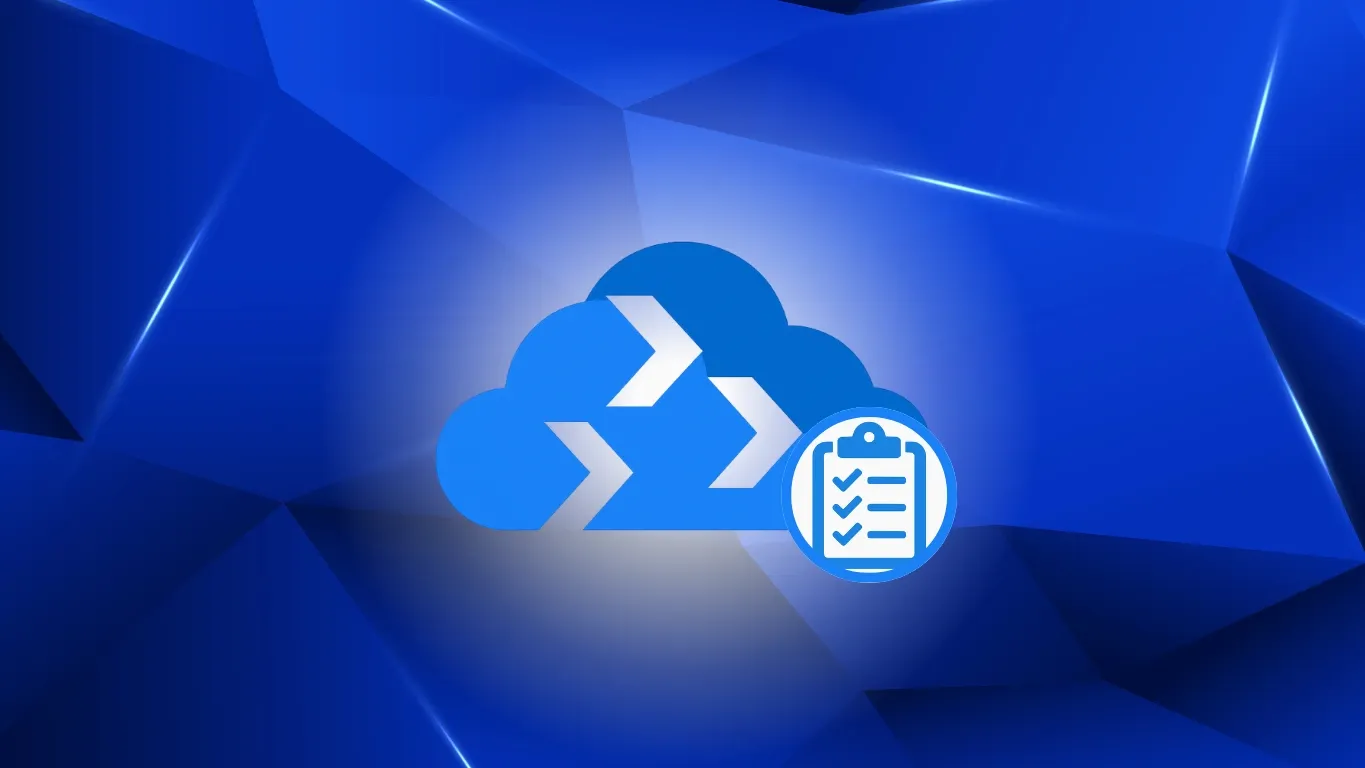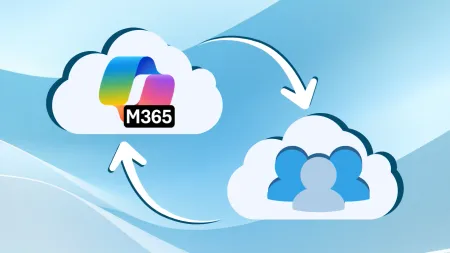Azure Migration Planning: A Complete Assessment Checklist for a Successful Transition
A successful Azure migration starts with proper planning. Use this step-by-step assessment checklist to evaluate infrastructure, dependencies, and tools before migrating.

There are plenty of reasons for a company to move its data, workloads, and applications from on-premises architecture to a cloud environment like Microsoft Azure. The transition can lead to greater efficiency in terms of performance, allowing your company to become more flexible and scalable moving forward. This versatility also lets you manage your resources more effectively with less risk of improper spending. But any migration process that isn’t fully thought out will likely lead to extended downtime, leaks, or other issues.
That’s why it is important to plan out each facet of the Azure migration beforehand to ensure that you can execute it as smoothly as possible. In this article, we’ll provide a checklist you can follow for a successful transition to the Azure cloud.
Step 1: Conduct an Azure Migration Assessment
You need to understand where you are before you can go to where you want to be. The first step in any Azure migration strategy is to take stock of your current operation with a pre-migration assessment. This helps you define your migration goals and discover if you have the capability to achieve your business objectives. The key areas to evaluate during an assessment include:
- The health of your existing infrastructure (servers, database, storage solutions, etc.)
- Application compatibility with Azure services
- The security and compliance requirements for your Data
Azure Migrate is a versatile solution that provides a central hub to assess different elements of your IT environment to better prepare for the migration. The Discovery and Assessment tool provides valuable information about your workloads to flesh out your migration strategy.
Step 2: Evaluating On-Premises Infrastructure Before Migration
The next step is to use the information found during discovery to discern if your on-premises servers, applications, and databases are ready to move onto the Azure cloud. Azure Migrate collects metadata, installed application features, and performance information to detail the cloud readiness of your operation. The assessment report can be exported and filtered into four categories: Ready for Azure, Conditionally Ready for Azure, Not Ready for Azure, and Readiness Unknown. You can also use Configuration Management Database (CMDB) data to learn how your servers are distributed across different units, owners, or geographies. This helps you determine which workloads should be the first to migrate and if any legacy systems need to be modernized to work on the cloud.
For further support in deciding your migration order, use Azure Advisor to analyze your resource configuration to get personalized recommendations for how to optimize Azure deployments. The Total Cost of Ownership (TCO) calculator is another tool to estimate the cost saving of moving workloads to Azure.
Step 3: Identifying Application Dependencies Before Migrating to Azure
After collecting information on your servers, you can analyze dependencies between on-premises servers. Dependency mapping is important for several reasons. Identifying the connections helps you identify what servers must be migrated together, if unused servers can be decommissioned with minimal risk, and gives you a greater understanding of your network topology and bandwidth requirements. This ensures that functionality will not be overly affected by migrating to Azure, and potential challenges are considered early in the process.
Azure Service Map and Azure Monitor VM Insights are two ways to track independencies between applications, databases, and services. The tool automatically discovers and shows how these systems communicate with each other, inbound and outbound connection latency, and ports across TCP-connected architecture without the need to install more software. Service Map is being retired on September 30, 2025.
Step 4: Selecting the Right Azure Migration Tools
Utilizing the right Azure tools is crucial to the implementation of your migration strategy. We’ve covered what Azure Migrate brings to the table as the primary tool for migration assessments, but here is how other tools can be used to streamline the process:
- Azure Cost Management — Azure Cost Management helps businesses track resource usage to control spending at a granular level with cost analysis and budget alerts.
- Azure Site Recovery — Azure Site Recovery protects against data loss by replicating workloads on physical and virtual machines (VMs) on a secondary location to lessen the damage of an outage.
- Azure Monitor — Azure Monitor provides multiple avenues to track and act on telemetry data from Azure and on-premises environments. Dashboards can visualize metrics to help your team comprehend the performance and health of your infrastructure.
- Azure Security Center — The Azure Security Center allows you to monitor the status of all cloud applications. This strengthens your ability to act against active threats and provide greater protection to your servers.
Step 5: Creating an Azure Migration Strategy
Azure migration can take many forms. Each migration strategy comes with its own time and resource requirements. In many instances, a hybrid or phased migration may be best to minimize downtime or other risks. The best choice for your organization depends on your business needs and the state of your infrastructure:
- Rehosting – Also known as lift and shift, this strategy involves moving workloads and data to Azure with no or few changes. It is quicker and more cost-effective than other approaches, but only suitable for applications that are already suitable for the cloud.
- Refactor — In this strategy, minor adjustments are made to applications to optimize their performance post-migration. Refactoring is best used in situations where companies want to continue using their existing code base.
- Re-architect — Significant changes are made to make applications more effective on a cloud platform.
- Rebuild/Replace — For applications that are severely limited in a cloud environment, some businesses may choose to completely rebuild an application with cloud-native technologies or replace it with a software as a service (SaaS) solution.
Common Azure Migration Challenges and How to Avoid Them
- Underestimating Migration Complexity – Azure migrations are complicated processes where many different factors must be considered to verify a successful transition. The best way to avoid this is with extensive pre-migration testing and assessments to identify compatibility problems as early as possible.
- Security and Compliance Gaps – Migrating to a cloud environment could lead to new cyber threats to your business. Azure security tools and role-based access control must be implemented to prevent data from becoming available to bad actors. Security protocols must also be reviewed on a regular basis.
- Unexpected Costs — To avoid reckless or improper spending during a migration, use Azure Cost Management and Azure Advisor to track resource usage and make adjustments when necessary.
- Downtime Risks — System downtime is one of the most pressing concerns when it comes to cloud migration. Businesses can prevent unwanted disruptions by evaluating network and latency requirements, implementing substantial backup services, and migrating servers incrementally to minimize the amount of data that is moving at one time.
Post-Migration Optimization and Monitoring
After the migration takes place, you must take measures to track the performance of your servers and applications. Use Azure monitoring tools to confirm data integrity and discover any bottlenecks that limit performance. Make use of auto-scaling and reserved instances to increase the efficiency of your business in a cost-effective manner. Once some time has passed, conduct performance tests on all applications to evaluate their effectiveness and make recommended adjustments if needed.
It’s also important to promote a culture of continuous learning within your organization to ensure that your organization remains fit for modern standards. Provide ongoing training, understand the latest Azure updates, and ensure your team has the requisite certifications.
Conclusion
Migrating to Azure can bring a lot of benefits to your business, but not without investing thought and expertise into the Azure migration process. It’s important to evaluate the pre-migration environment and use the right migration tools to streamline the transition and comply with cybersecurity regulations. Agile IT is a great partner to help usher your company into the Azure ecosystem.
We combine passion, expertise, and a wealth of services to support your team as you move to cloud architecture. AgileSecure offers specialized techniques and strategies that cover the entire migration from the earliest stages to deployment. If your organization is in need of expert help with your Azure migration, contact Agile IT today.





